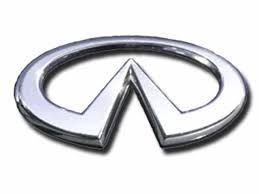FX35 RWD V6-3.5L (VQ35HR) (2010)
/Page-959010.png)
Press the piston evenly and vary the pressing point to prevent caliper inner wall from being rubbed.
4. Secure piston boot with retaining ring.
CAUTION:
-
Make sure that boot is securely engaged in the groove on caliper.
-
Never reuse retaining ring.
5. Install the caliper to tighten the caliper mounting bolts to the specified torque. .
6. Install brake pads. .
CAUTION:
Never drop brake pads, shims, pad pins and clips.
Inspection
REAR DISC BRAKE
BRAKE CALIPER ASSEMBLY (2 PISTON TYPE) : Inspection
INSPECTION AFTER DISASSEMBLY
Caliper
Check the inner wall of the caliper for rust, wear, cracks or damage. Replace the caliper if any abnormal condition is detected.
CAUTION:
Always clean with new brake fluid. Never clean with mineral oil such as gasoline and light oil.
Pistons
Check the surface of the piston for rust, wear, cracks or damage. Replace the piston if any abnormal condition is detected.
CAUTION:
A piston sliding surface is plated. Never polish with sandpaper.
INSPECTION AFTER INSTALLATION
1. Check a drag of rear disc brake. If any drag is found, follow the procedure described below.
2. Remove brake pads.
3. Press the pistons.
CAUTION:
-
Never damage the piston boot.
-
When replacing a pad with new one, check a brake fluid level in the reservoir tank because brake fluid returns to master cylinder
reservoir tank when pressing piston in.
NOTE:
Use a disc brake piston tool to easily press piston.
4. Install brake pads.
5. Depress the brake pedal several times.
6. Check a drag of rear disc brake again. If any drag is found, disassemble the cylinder body.
7. Burnish contact surface between disc rotor and brake pads after refinishing or replacing disc rotor, or if a soft pedal occurs at very low mileage.
See: Disc Brake System/Brake Rotor/Disc/Service and Repair/Rear Disc Brake.
